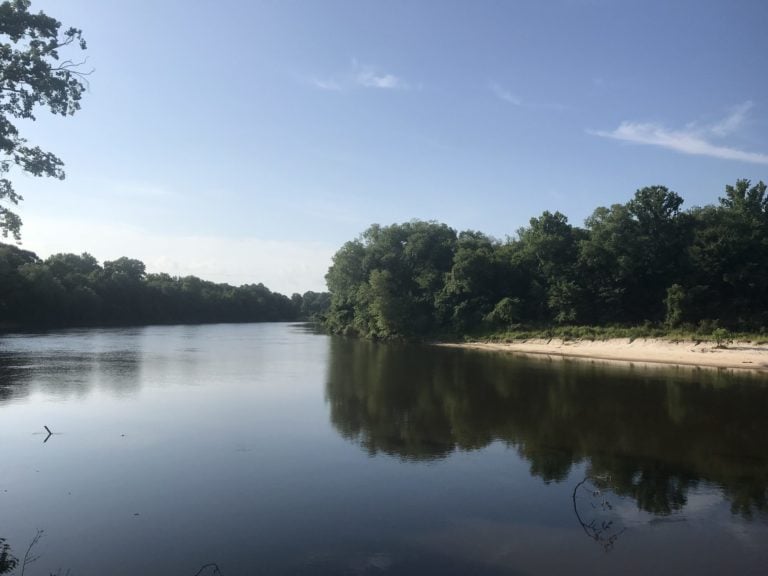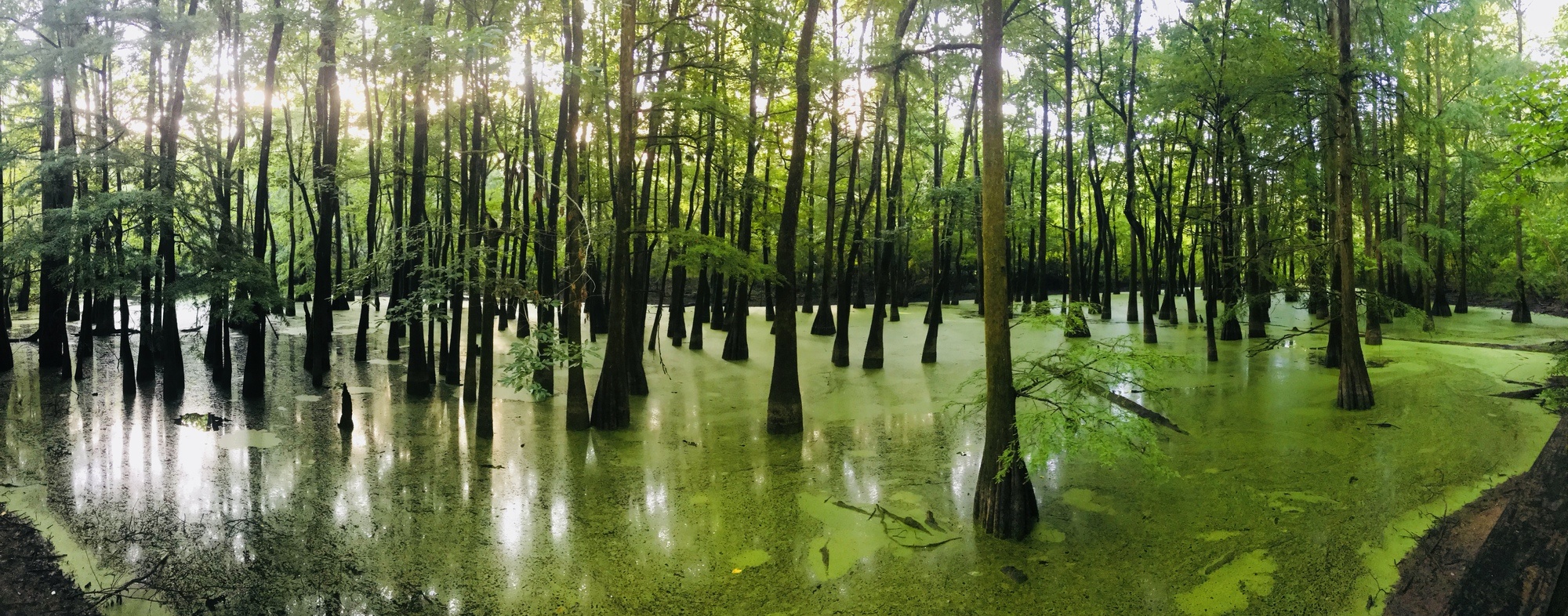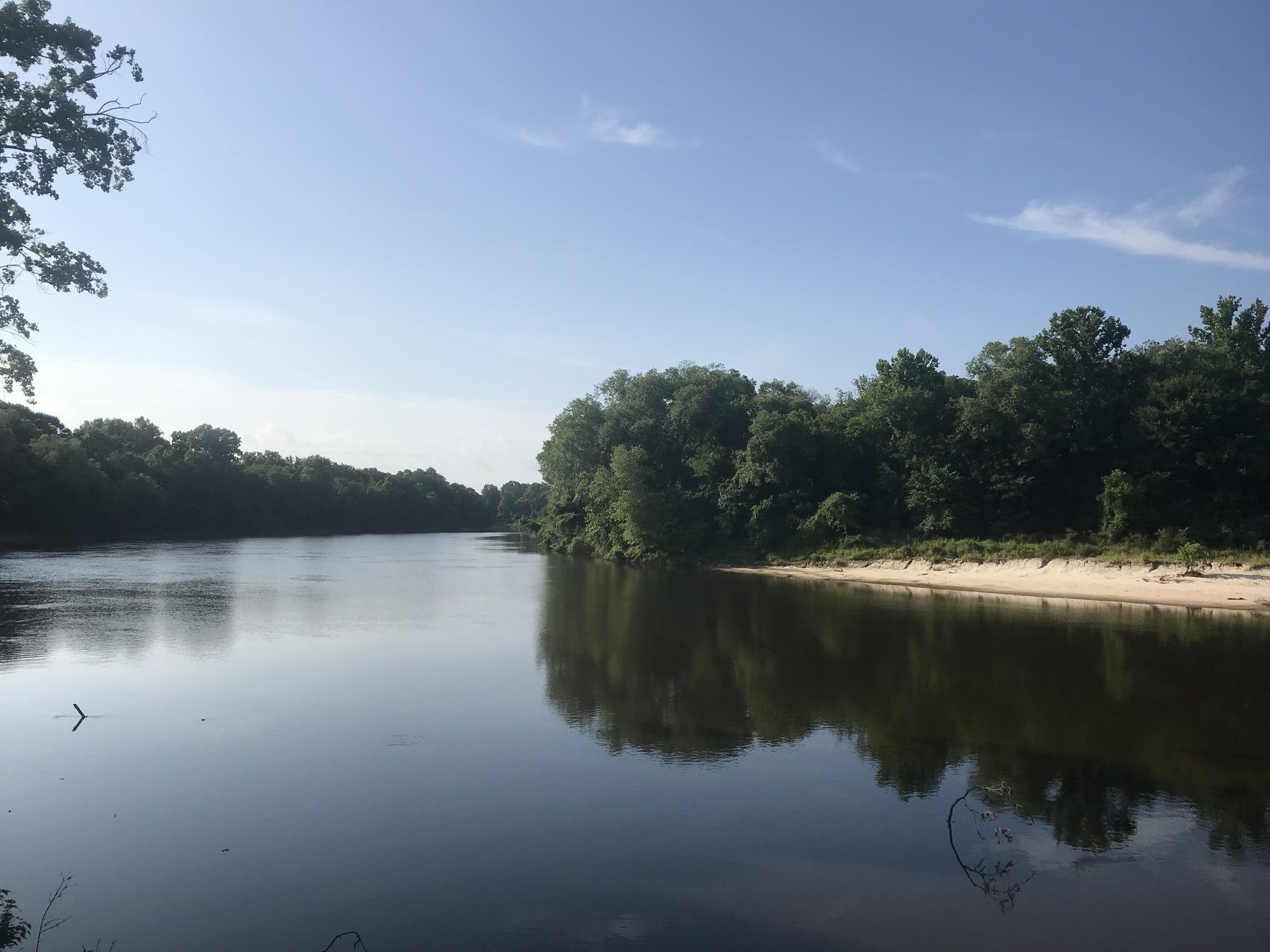
By Abby Braman, Pearl Riverkeeper
After the devastating 1979 Pearl River flood, the Army Corps of Engineers was tasked with developing a flood control plan for the city of Jackson, Mississippi. The Comprehensive Levee Plan proposed by the Corps did not receive local support and, beginning in 1996, various real estate development plans were proposed in the guise of flood control. The project designs have morphed over the years as the Corps rejected plan after plan due to prohibitive costs, lack of suitable flood control, and environmental destruction.
Most recently, local flood control sponsor, the Rankin-Hinds Pearl River Flood and Drainage Control District, released a Draft Environmental Impact Statement for a “One Lake” plan. This plan involves dredging, widening, and deepening 10 miles of the Pearl River and using a weir—a low dam built across a river—to create a lake impoundment. The dredge spoils would be used as fill to cover 1,500 acres of productive wetlands, creating land for private development.

The project will cause widespread habitat loss, possible annihilation of endangered species like the ringed sawback turtle and the Gulf sturgeon, and loss of wetland ecosystem services such as groundwater replenishment, water purification and pollutant removal, and natural erosion and flood control. In addition to localized environmental havoc, the project will have detrimental impacts downstream. Since the Pearl River is the 4th largest source of freshwater to the Gulf east of the Mississippi River, communities and businesses downstream of the project area will be impacted by a change in river hydrology. Gulf coast estuaries, commercial fishing and oyster industries, and restoration projects like the $50 million Hancock County Marsh Living Shoreline Project rely on stable freshwater flows from the Pearl River.
Despite proponents’ claims, the project at its core is arguably a real estate scheme that disregards the river’s valuable natural resources. The project’s environmental impacts led the group American Rivers to include the Pearl in its list of 10 Most Endangered Rivers. The environmental costs of river dams are well known, which is why so many are being removed across the U.S. One Lake is a throwback to a time when such impacts took a backseat to development.

The logical alternative to the “One Lake” project is a greenway linking existing nature preserves and parks and creating new ones to better utilize the river for recreation, tourism, and outdoor-related development, coupled with a flood control alternative. A greenway would have greater potential to improve the region’s quality of life in a sustainable way, for far less money and without sacrificing a river that is crucial to the environment far beyond Jackson.
State and federal funds will be used for this project if it is approved. The Draft Environmental Impact Statement is available for public review and public comment through September 6. Learn more and join Pearl Riverkeeper in urging the US Army Corps of Engineers to reject this project at www.OneRiverNoLake.com.